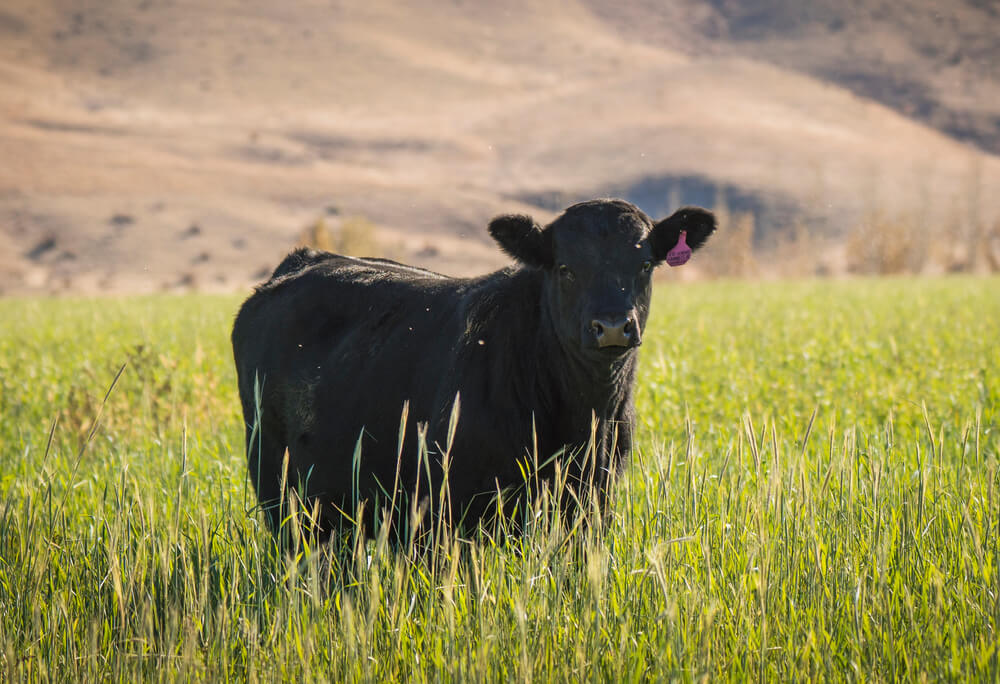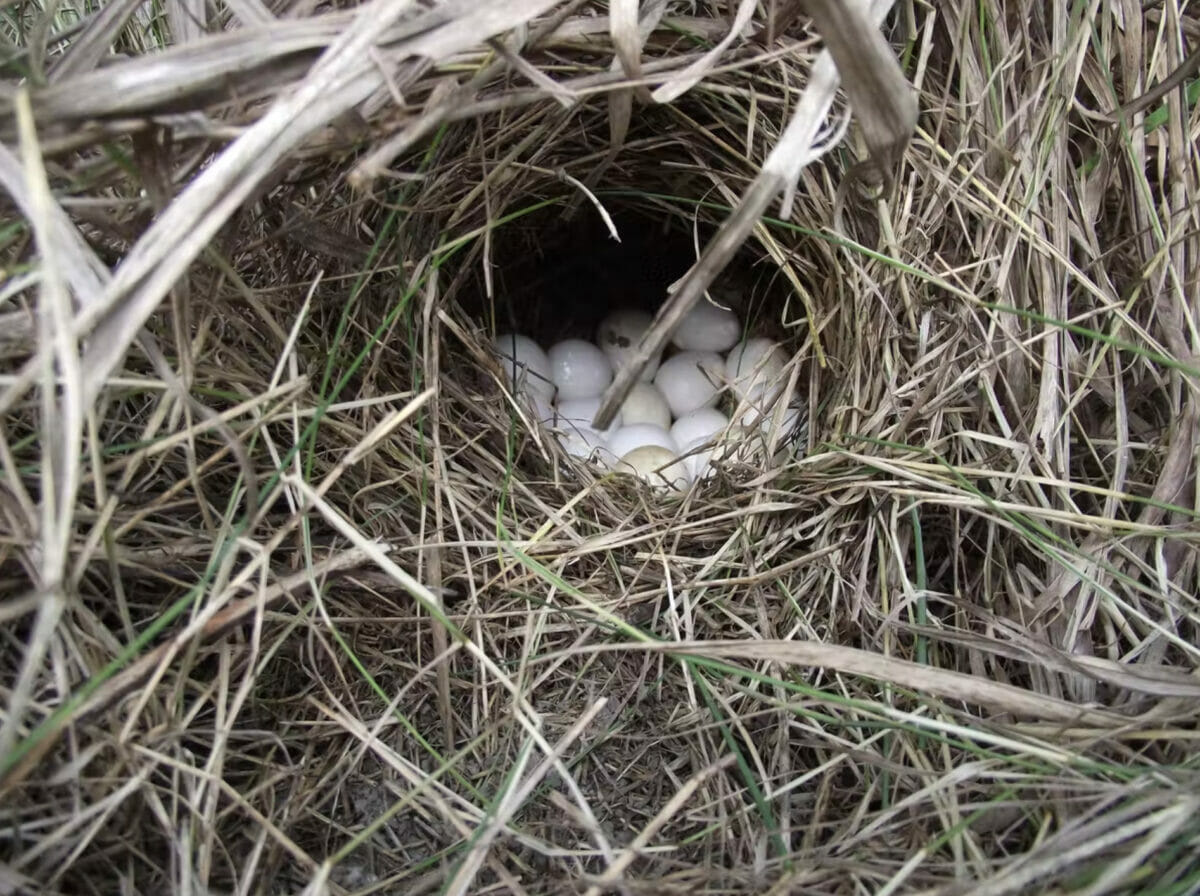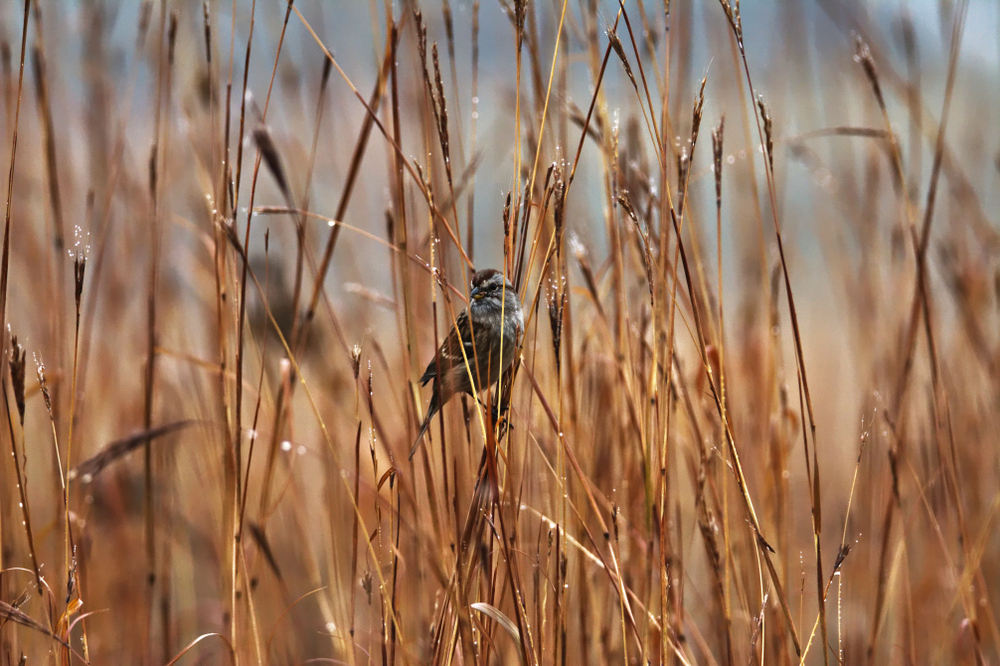Opinion: Raising Cattle on Native Grasses Benefits Farmers, Wildlife and the Soil
Growing native grasses as cattle forage is an example of working lands conservation—balancing human use of the land with conservation goals.
Opinion: Raising Cattle on Native Grasses Benefits Farmers, Wildlife and the Soil
Growing native grasses as cattle forage is an example of working lands conservation—balancing human use of the land with conservation goals.

Native grasses are not only good for cows, but entire ecosystems.by GypsyPictureShow, Shutterstock.
This article is republished from The Conversation under a Creative Commons license. Read the original article.
Early on a cool June morning, heavy dew lies on the grass of rolling farm country somewhere in Tennessee, or Missouri or Pennsylvania. Small patches of fog hang in low lying pockets of these fields. In the distance, hardworking farmers are starting their day. Farm equipment clangs, tractors roar to life and voices lining out the day’s work drift on the air.
This pastoral scene is repeated thousands of times each morning across rural America. But something is missing: the exuberant “Bob bob white!” call of the bobwhite quail that for generations was the soundtrack to summer mornings. Once abundant across the eastern US, bobwhite populations have declined by 85 percent. Calculations suggest that the remaining population could be cut in half within the next decade.
Many other grassland birds, such as grasshopper sparrows and eastern meadowlarks, also are disappearing at an alarming rate. Taken together, grassland birds have experienced the worst population declines among all North American birds.
Why is this happening? In a word, habitat. Native grasslands in the US, especially those east of the Great Plains, which once covered millions of acres, have almost completely disappeared. Some have been converted to croplands. Others have been allowed to grow back up into forests, where shade from the tree canopy prevents the growth of these grasses.

Still others have been planted with grasses that are native to Europe, Africa or Asia. These introduced grasses tend to be shorter than our tall, native species and grow in dense, solid mats that cover the ground. Native species, on the other hand, are bunchgrasses: They grow in clumps, with spaces between plants that benefit many of these nesting birds, especially the bobwhite.
Native grasses for birds, and cattle
One solution to these declines draws on the concept of working lands conservation—making agricultural lands productive not only for cattle, but also for declining species such as grassland birds. One compelling opportunity for such an approach is using some of the native grasses that have been lost from the eastern US to provide pasture for cattle. Reintroducing these grasses to farms could benefit cattle farmers as well as birds. My new book, Native Grass Forages for the Eastern US, explains why and how these grasses can fit into working farms.
I have combined my research on native grasses over the past 15 years at the University of Tennessee Institute of Agriculture with the work of many other scientists that has accumulated over the past 100 years. Collectively, this research suggests that native grasses can not only be brought back but can play a strategic role on our farms today.
Growing forages requires fertilizer, diesel and seed, all of which are becoming more expensive. At the same time, climate change is making some parts of the US wetter and other parts drier.
In the face of these stresses, I see native grasses like big bluestem as a promising solution. These grasses, which have grown in North America for millennia, are naturally well adapted to the eastern US, and I believe they can once again benefit family farms.

As I show in my book, these grasses have roots that can extend as much as eight to 10 feet deep into the soil. They are remarkably drought tolerant and can grow and thrive in soils with low fertility and high acidity.
Their large root systems also help to increase the organic matter in soils, which makes the soil healthier and more productive. Building up organic matter, which consists mostly of carbon, stores carbon in the soil rather than the atmosphere.
But what about the cattle? Numerous studies show that forage yields are high for these species. Cattle readily consume them, and this diet produces strong gains on the growing animals. This combination of high yields, strong gains and low input requirements means that these forages can be produced profitably.
A recent study conducted here in Tennessee resulted in strong animal performance for beef steers and heifers, with the cost of feed for the animals coming in at only $0.29 per pound. This is a very good bargain: Cost ranges for many nonnative forages can be $0.80-0.90 per pound, and purchased feed can run well over $2.00 per pound of weight gain.
In that same study, we monitored the nesting success of two at-risk species associated with eastern pastures: grasshopper sparrows and field sparrows. We found that compared to pastures growing a nonnative grass species called tall fescue, the native grass pastures produced between two and six times more fledgling birds per acre. This is the outcome that working lands conservation seeks to deliver: more beef and more birds, all at a fair price.
Making the switch
The biggest challenge of cultivating native grasses is getting the grasses established. Converting existing pastures to native grasses requires completely renovating the fields, and lots of patience as the native grass seedlings develop. These species are slow starters.
Once they get a good root system under them, they can grow quite rapidly, but until then they are vulnerable to weed pressure. And converting fields is not cheap, due particularly to seed costs. However, farmers can receive financial support for planting native grasses from the US Department of Agriculture’s Natural Resources Conservation Service.
As the world’s population grows, it will be a struggle to produce enough nutrient-dense proteins to feed everyone. Grasslands can produce high-quality dietary protein cost-effectively, while also reducing atmospheric carbon and supporting North American grassland birds and other wild species.
As King Solomon said long ago, there is nothing new under the sun. Native grasses are not new, but today I see them as a modern solution to some of our planet’s most pressing challenges.
Patrick Keyser is a professor of forestry, wildlife and fisheries and the director of the Center for Native Grasslands Management at University of Tennessee.
Follow us
This work is licensed under a Creative Commons Attribution-NoDerivatives 4.0 International License.
Want to republish a Modern Farmer story?
We are happy for Modern Farmer stories to be shared, and encourage you to republish our articles for your audience. When doing so, we ask that you follow these guidelines:
Please credit us and our writers
For the author byline, please use “Author Name, Modern Farmer.” At the top of our stories, if on the web, please include this text and link: “This story was originally published by Modern Farmer.”
Please make sure to include a link back to either our home page or the article URL.
At the bottom of the story, please include the following text:
“Modern Farmer is a nonprofit initiative dedicated to raising awareness and catalyzing action at the intersection of food, agriculture, and society. Read more at <link>Modern Farmer</link>.”
Use our widget
We’d like to be able to track our stories, so we ask that if you republish our content, you do so using our widget (located on the left hand side of the article). The HTML code has a built-in tracker that tells us the data and domain where the story was published, as well as view counts.
Check the image requirements
It’s your responsibility to confirm you're licensed to republish images in our articles. Some images, such as those from commercial providers, don't allow their images to be republished without permission or payment. Copyright terms are generally listed in the image caption and attribution. You are welcome to omit our images or substitute with your own. Charts and interactive graphics follow the same rules.
Don’t change too much. Or, ask us first.
Articles must be republished in their entirety. It’s okay to change references to time (“today” to “yesterday”) or location (“Iowa City, IA” to “here”). But please keep everything else the same.
If you feel strongly that a more material edit needs to be made, get in touch with us at [email protected]. We’re happy to discuss it with the original author, but we must have prior approval for changes before publication.
Special cases
Extracts. You may run the first few lines or paragraphs of the article and then say: “Read the full article at Modern Farmer” with a link back to the original article.
Quotes. You may quote authors provided you include a link back to the article URL.
Translations. These require writer approval. To inquire about translation of a Modern Farmer article, contact us at [email protected]
Signed consent / copyright release forms. These are not required, provided you are following these guidelines.
Print. Articles can be republished in print under these same rules, with the exception that you do not need to include the links.
Tag us
When sharing the story on social media, please tag us using the following: - Twitter (@ModFarm) - Facebook (@ModernFarmerMedia) - Instagram (@modfarm)
Use our content respectfully
Modern Farmer is a nonprofit and as such we share our content for free and in good faith in order to reach new audiences. Respectfully,
No selling ads against our stories. It’s okay to put our stories on pages with ads.
Don’t republish our material wholesale, or automatically; you need to select stories to be republished individually.
You have no rights to sell, license, syndicate, or otherwise represent yourself as the authorized owner of our material to any third parties. This means that you cannot actively publish or submit our work for syndication to third party platforms or apps like Apple News or Google News. We understand that publishers cannot fully control when certain third parties automatically summarize or crawl content from publishers’ own sites.
Keep in touch
We want to hear from you if you love Modern Farmer content, have a collaboration idea, or anything else to share. As a nonprofit outlet, we work in service of our community and are always open to comments, feedback, and ideas. Contact us at [email protected].by Patrick Keyser, Modern Farmer
April 17, 2022
Modern Farmer Weekly
Solutions Hub
Innovations, ideas and inspiration. Actionable solutions for a resilient food system.
ExploreShare With Us
We want to hear from Modern Farmer readers who have thoughtful commentary, actionable solutions, or helpful ideas to share.
SubmitNecessary cookies are absolutely essential for the website to function properly. This category only includes cookies that ensures basic functionalities and security features of the website. These cookies do not store any personal information.
Any cookies that may not be particularly necessary for the website to function and are used specifically to collect user personal data via analytics, ads, other embedded contents are termed as non-necessary cookies.
“The biggest challenge of cultivating native grasses is getting the grasses established. Converting existing pastures to native grasses requires completely renovating the fields, and lots of patience as the native grass seedlings develop. These species are slow starters.” This is the main reason I see it, it’s going to take multiple years to establish fields which basically means the land is going to be vacant for some time, on top of initial investments into the switch(even with gov support). Maybe there are a way to recoup some expenses by making those fields something like camping spots(no vehicles ofc, I’d say… Read more »